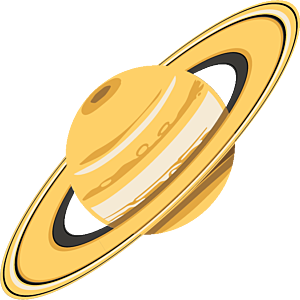The Downlink • Mar 11, 2022
Dive into these ocean worlds
Space Snapshot

Jupiter’s moon Europa, seen here in an image from NASA’s Galileo spacecraft, is one of several solar system bodies suspected of having oceans concealed beneath their surfaces. The newest issue of The Planetary Report, our quarterly magazine, takes a deep dive into the most likely ocean worlds and the missions set to explore them. Plus, find out what you can do as an advocate to make sure we find out what really lies beneath the surfaces of these mysterious worlds. Image credit: NASA / JPL / Ted Stryk.
You love space, now take action
This weekly newsletter is your toolkit to learn more about space, share information with your friends and family, and take direct action to support exploration. Anyone can subscribe at planetary.org/connect to receive it as a weekly email.
Mission Briefings


We’re getting closer to visiting Europa. NASA’s Jet Propulsion Laboratory says all nine science instruments aboard the Europa Clipper mission will be ready by the end of 2022. The mission is set to launch in 2024, and would arrive at the Jupiter system in 2030. Pictured: An artist’s impression of the spacecraft at Europa. Image credit: NASA/JPL-Caltech.

NASA invites you to go to the Moon — without actually going to the Moon. The space agency is now collecting names that will fly around the Moon as part of the Artemis I mission. Names will be stored on a flash drive secured on the Orion spacecraft. You can submit your name here and create a “boarding pass” before launch.
From The Planetary Society


If you want to visit a distant world, you’ve got to pass a few tests. Before launching, spacecraft need to prove that their instruments can withstand tremendous noise, shaking, radiation, temperature fluctuations, and other extreme conditions that space exploration entails. A new article from Planetary Society contributing editor Jatan Mehta takes readers through the array of tests a spacecraft has to pass, as well as the remarkable test facilities that are used to simulate the conditions of space. Pictured: ESA’s Jupiter-bound JUICE spacecraft undergoing an extreme temperature test in a thermovac chamber. Image credit: ESA/M. Cowan.

How long ago was Mars an ocean world? Planetary scientist and Planetary Society president Bethany Ehlmann has co-authored a paper presenting evidence that liquid surface water flowed on Mars as much as a billion years more recently than previously thought. That’s an extra billion years for possible life to have formed and thrived. She joins the latest episode of Planetary Radio to talk about her findings and what they might mean for the search for life beyond Earth.
A successful Day of Action

This past Tuesday, March 8th, Planetary Society advocates around the world worked together to advance a unified advocacy message, calling for greater investments in space science, exploration, and planetary defense. In the United States, 115 Planetary Society members had a total of 161 virtual meetings with their representatives in Congress to directly ask for support for key NASA programs. A further 680 advocates sent emails to Congress and the White House echoing these same key asks. And all across our planet, advocates contacted their governments to urge them to join global efforts to defend Earth from asteroid impacts.
The Day of Action is our largest annual advocacy event, and we’re thrilled to have had such strong participation from our members and supporters. When this many people all voice the same message, it’s impossible to ignore it. Together, we’re making a real impact on the future of space science, planetary exploration and asteroid defense.
If you took part in the Day of Action and want to tell us about your experience, write to [email protected]. And if you want to support advocacy work like this, you can make a gift to our space policy and advocacy program fundraiser, which just launched.
Pictured: Advocates in action. Image credits: From left to right: (Top row) Jennie King, Robert B. Powers, Jessalyn Gerbholz; (Middle Row) Marco and Corrie Thompson, Heidi Jacobs and Janet Goehner-Jacobs, Jarrod Bieber; (Bottom row) Cory Schmidt, Sharife Gacel and Anubis, Joseph Ladd.
What's Up

The predawn is the best time for planet-spotting, with Venus shining brightly in the east, with reddish Mars and yellowish Saturn closer to the horizon. In the evening sky, look for Orion and the Pleiades. Learn more at planetary.org/night-sky.
Wow of the Week

This painting from Planetary Society member Andrew Stewart, which also features on the back cover of the newest Planetary Report, shows a view from the surface of Titan, another ocean world. Two astronauts look out across a great methane lake to see Saturn edge-on with the Sun’s rays breaking beyond. Until humans can make it to such distant worlds, we’ll keep advocating to send robotic emissaries to take in views like this on our behalf.
Share your artwork with us!
We love to feature space artwork in the Downlink. If you create any kind of space-related art, we invite you to send it to us by replying to any Downlink email or writing to [email protected]. Please let us know in your email if you’re a Planetary Society member!


 Explore Worlds
Explore Worlds Find Life
Find Life Defend Earth
Defend Earth


